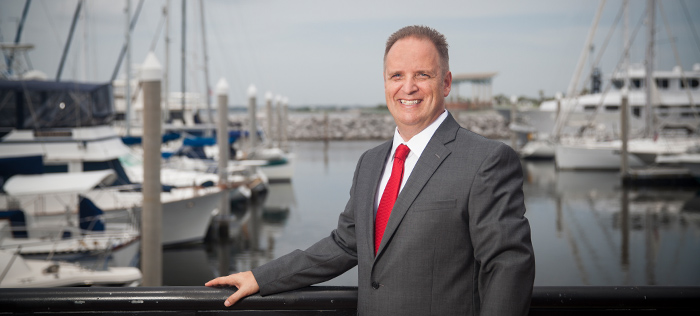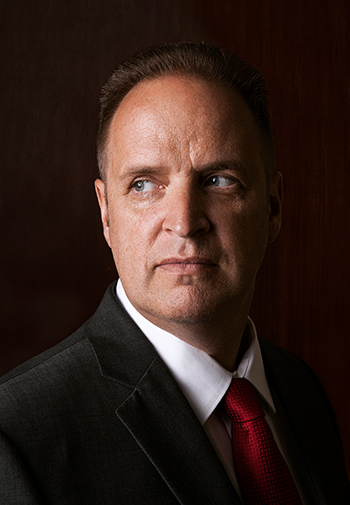Watershed moment
Watershed moment

Rich Ralston • Pensacola, FL
Parkway Financial Group • ProEquities Inc.
On the heels of the 2003 dot-com crash, Rich Ralston learned about active investment management. As his advisory practice began using third-party managers for dynamic, risk-managed strategies, he made sure his clients received the education they needed to appreciate an active management approach.
I also like to work with people who are open to financial education, willing to consider new alternatives, and open-minded. We pride ourselves on not doing things in any predetermined fashion, and everything is dependent on a needs analysis and risk profile for each client. We employ sophisticated, modern strategies for investment and risk management that a lot of people may not be familiar with. So they need to be open to looking at things in a new light.

Preservation of capital is the primary concern, closely followed by how they are going to make those assets grow and last throughout retirement.
Fortunately, we had been able to weather that crash fairly well, as I had been pruning the equity side of client portfolios and moving a fair amount of money into fixed income.
But that was really more of a “seat-of-the-pants” decision-making process, and I thought there had to be a better way. So I started exploring third-party asset managers who were all about tactical money management. This is exactly what I was looking for and what my clients were calling for, though they had very little idea then what it was all about.
Active management is a totally different ball game than traditional buy-and-hold strategies. As I explain now to clients, their money is being managed by experts who are constantly watching the markets and making portfolio adjustments as needed. There is very little guesswork or opinion involved, as most of these managers have very strict rules-based methodologies and use a quantitative decision-making approach.
The bottom line is that the vast majority of my clients who are very concerned with capital preservation can now employ a systematic and disciplined approach for long-term asset growth. They know someone is watching over their money every minute of every day, which is very reassuring to them. They know they are using strategies that usually have long track records and are based heavily on research.
 Let’s go back to my point on having clients who are open to education.
Let’s go back to my point on having clients who are open to education.
Active management is a totally new concept for many people who have been brought up on the buy-and-hold approach their entire lives. When they hear the phrase “active management” for the first time, some are concerned about it being riskier than buy-and-hold investing, when in fact it is built to be just the opposite. So I use this as an educational process with a lot of charts and illustrations to communicate what it is all about and how it is designed to work.
There is also the matter of fees, which can be somewhat of a concern initially. But the percentage, frankly, is very low, and I demonstrate how that can be offset in a meaningful way when we come upon the next inevitable market displacement. The numbers then make sense for most people.
Finally, there is the matter of how active management might perform in strong bull markets. But, it is built around risk management, and that can sometimes lead to underperforming the market. There will always be clients who, if the S&P 500 is up 30%, want to see a return of 32%. The challenge is educating clients that this is an approach for the long term, across market cycles, and the key is risk-adjusted returns.
This makes sense to most people, but to some it is a hard concept to grasp. Then I have clients, like a very smart former engineer, who say, “It’s about time investment methods moved into the 21st century. It’s about time strategies were monitored in real time.” I think most of my clients eventually come to that point of view. And it does not have to be a total and abrupt change. For some, I introduce active strategies very slowly.
I am also quick to show that over the last four years or so most active strategies have underperformed the S&P, and I show those numbers as well. The message here is really that the benchmark for most people should not be the S&P 500. Who really wants to see 50%-plus drawdowns in their portfolios? And who wants to try to count on 30% annual gains?
This should not be the objective over the long haul. For me, the perfect analogy is the race between the tortoise and the hare, and I am most interested in who is going to win that race in the final analysis. I love to communicate the storyline about how the “slow and steady” approach—and avoiding excessive volatility—can make a big difference when looking out over lengthy time periods. Helping clients to succeed with their goals over the long term is what it is all about for me.
Disclosure: Advisory services offered through Investment Advisors, a division of ProEquities Inc., a registered investment advisor. Securities offered through ProEquities Inc., a registered broker-dealer, and member FINRA and SIPC. Parkway Financial Group is independent of ProEquities Inc.
Photography by Todd Douglas

